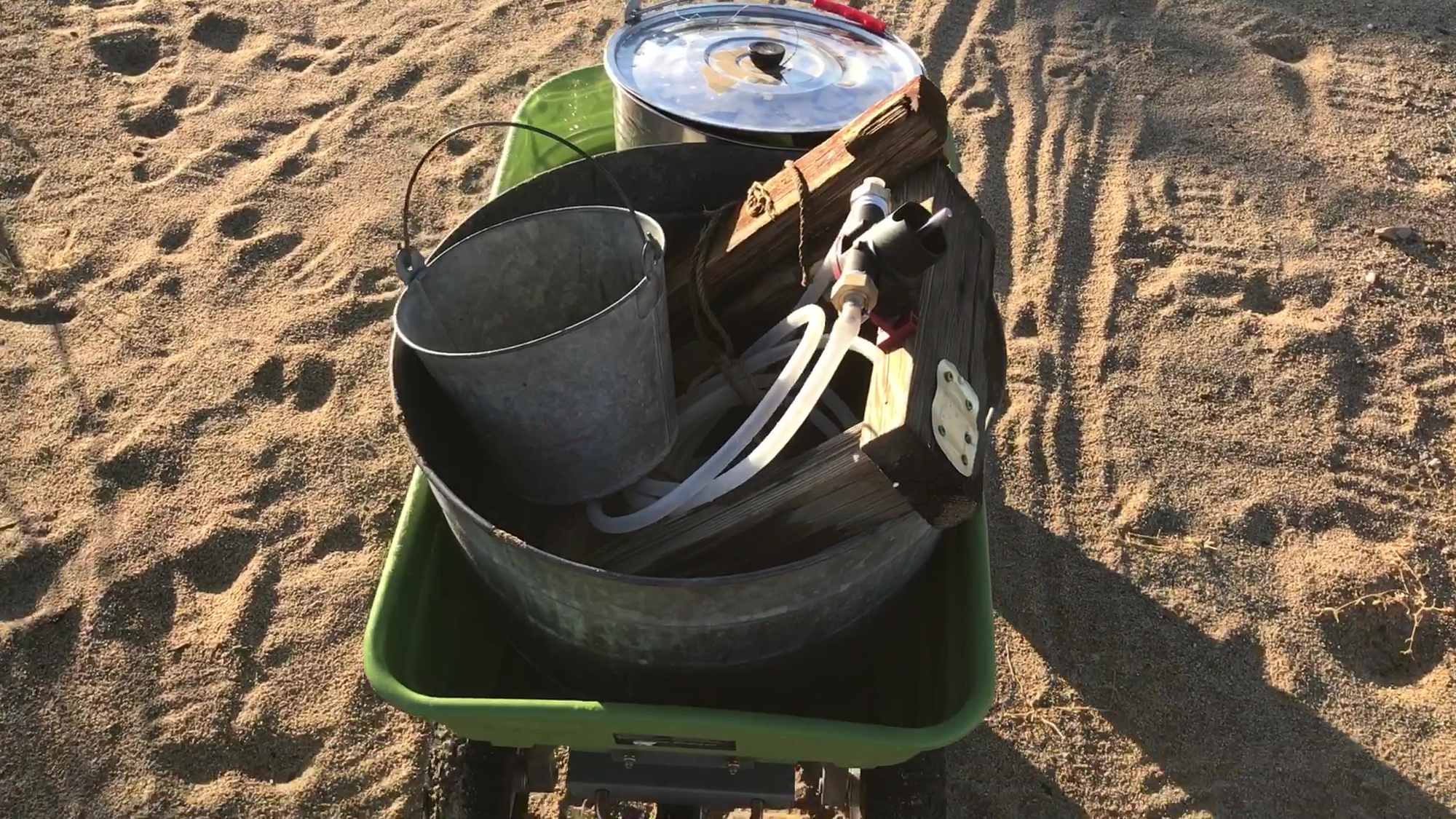
00 Rolling Cart With Drill Pump Rain Water Harvest Gear
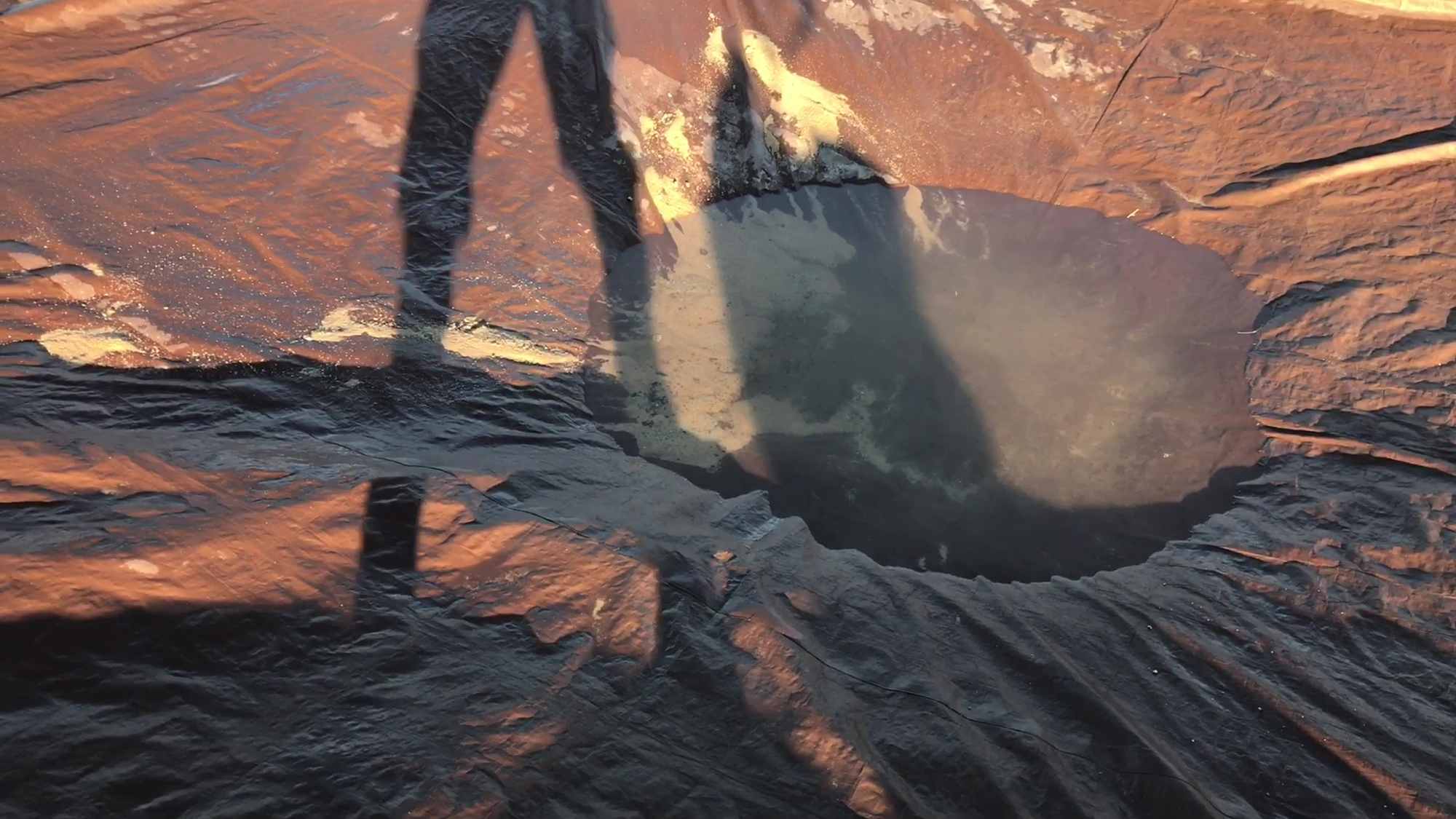
01 Approaching Rain Water Catchment Tarp The Morning After Rains
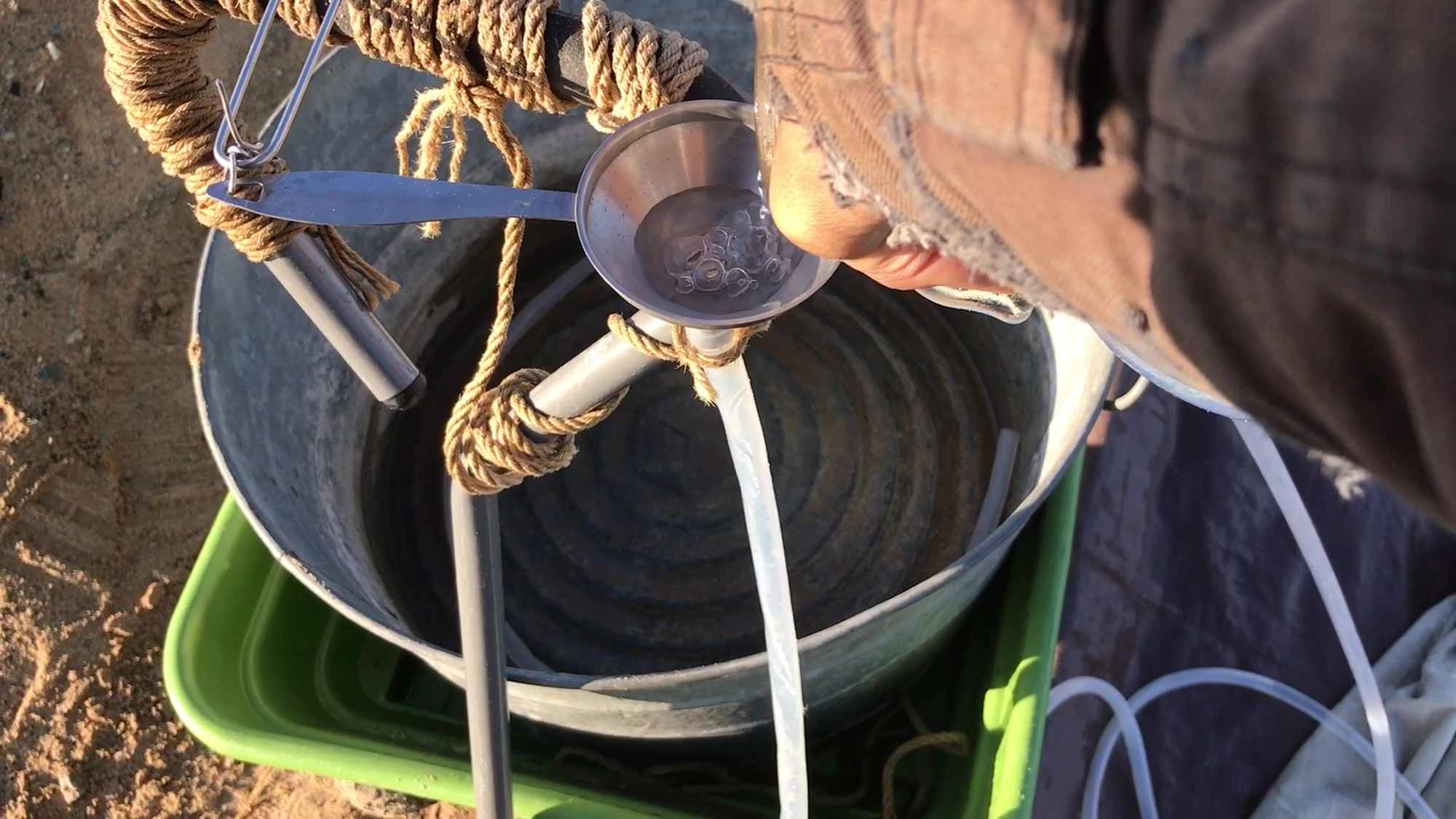
02 Priming Drill Pump With Water Jug And Funnel

03 Extending Tubes From Drill Pump Platform

04 Dropping Water Filled Tube Into Rain Water Tarp Catchment Pond
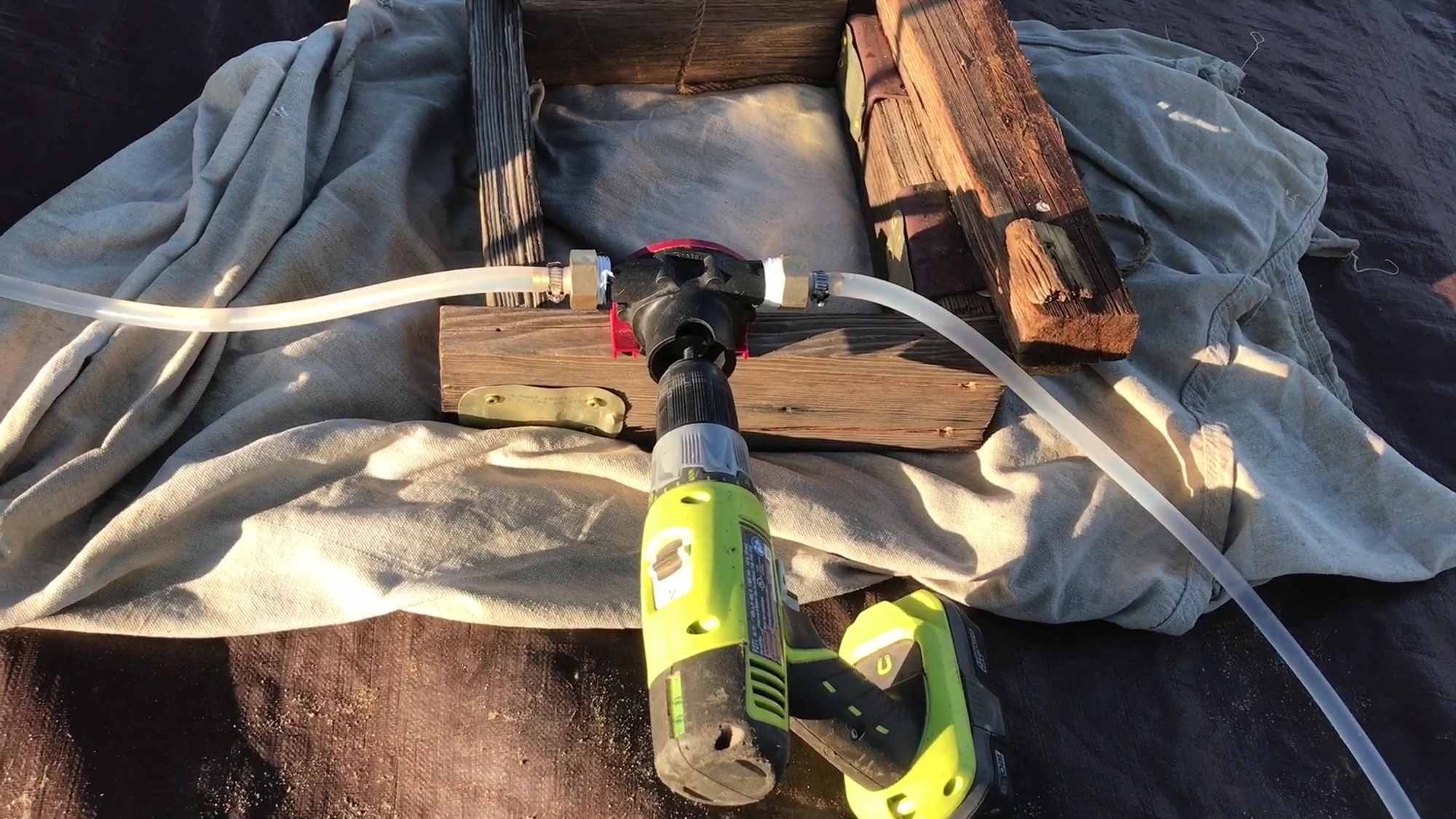
05 Securing Drill To Drill Pump
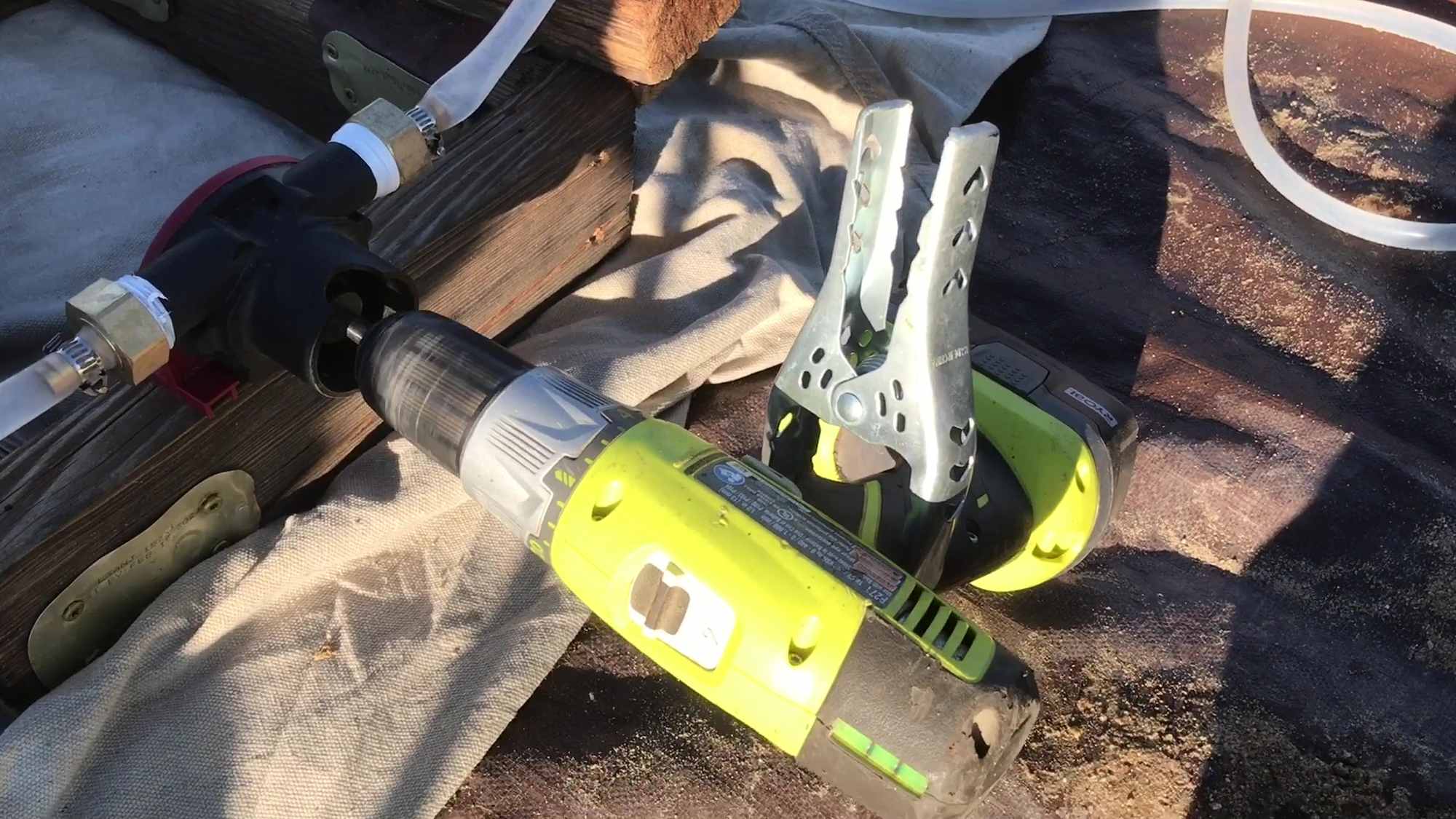
06 Applying Metal Spring Clamp To Hold Drill In On Position
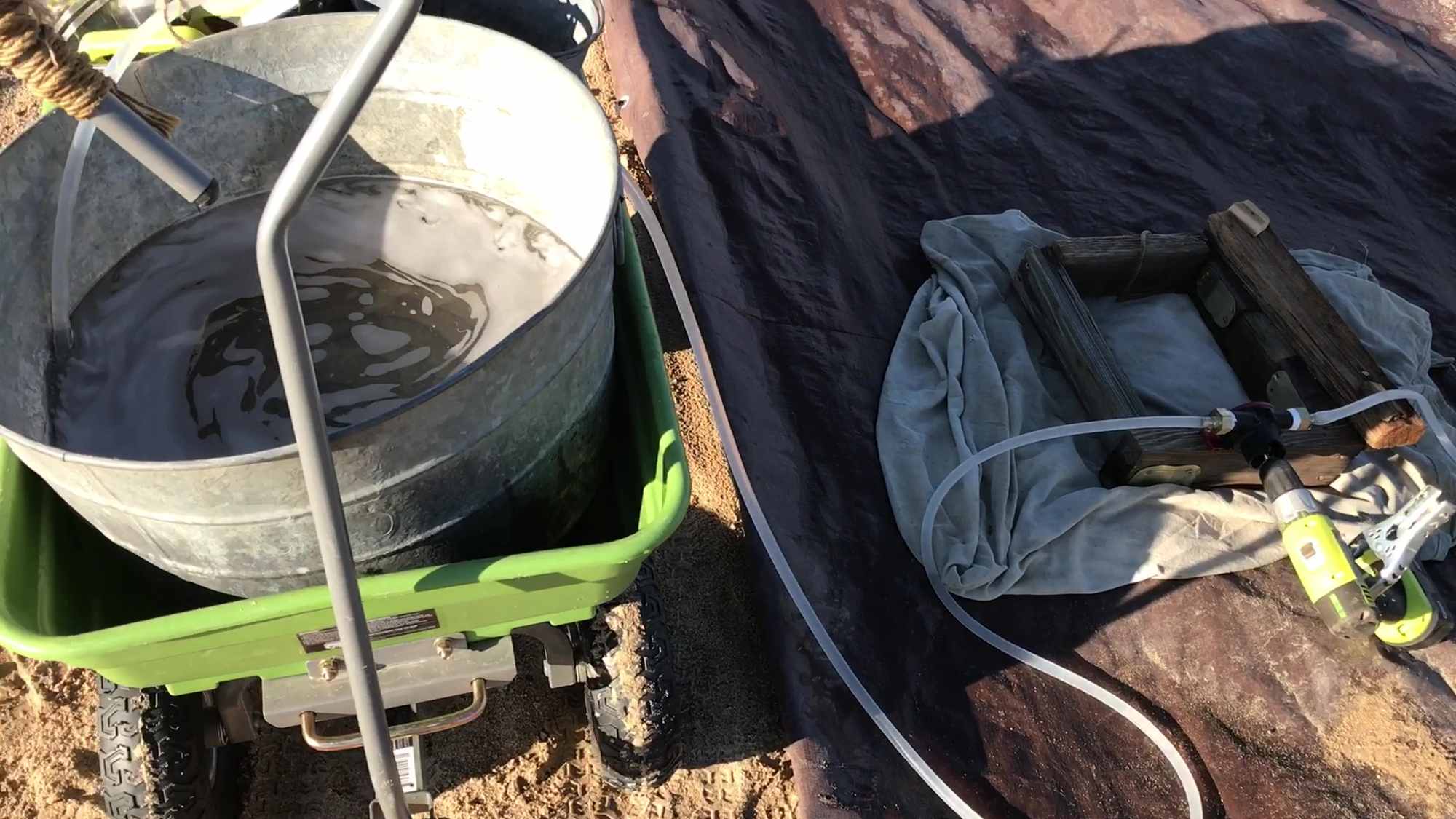
07 Filling Galvanized Basin With Drill Pumped Water Through Tube Upslope
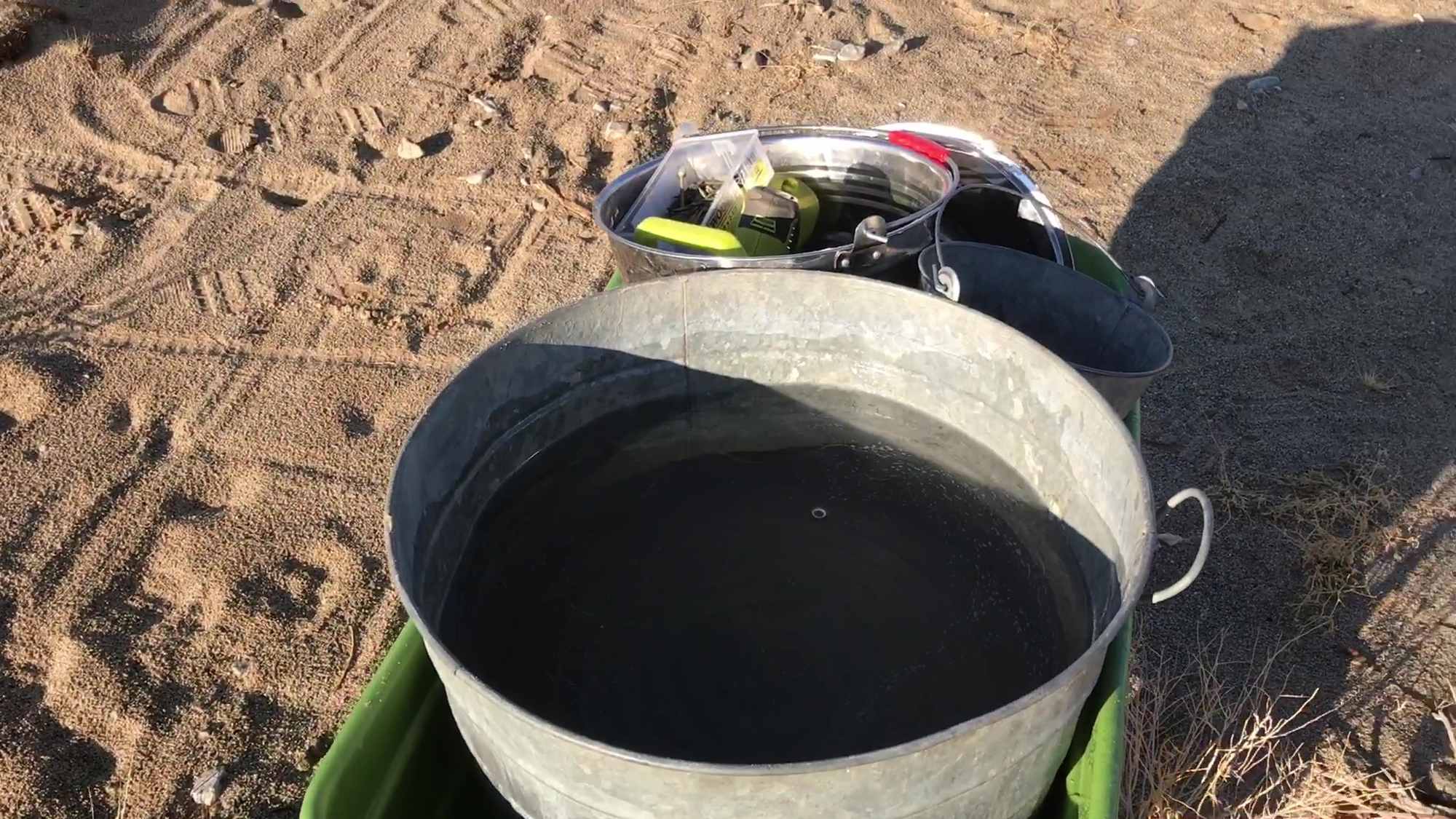
08 Rolling Rain Water Harvest Back To Base Camp For Filtration
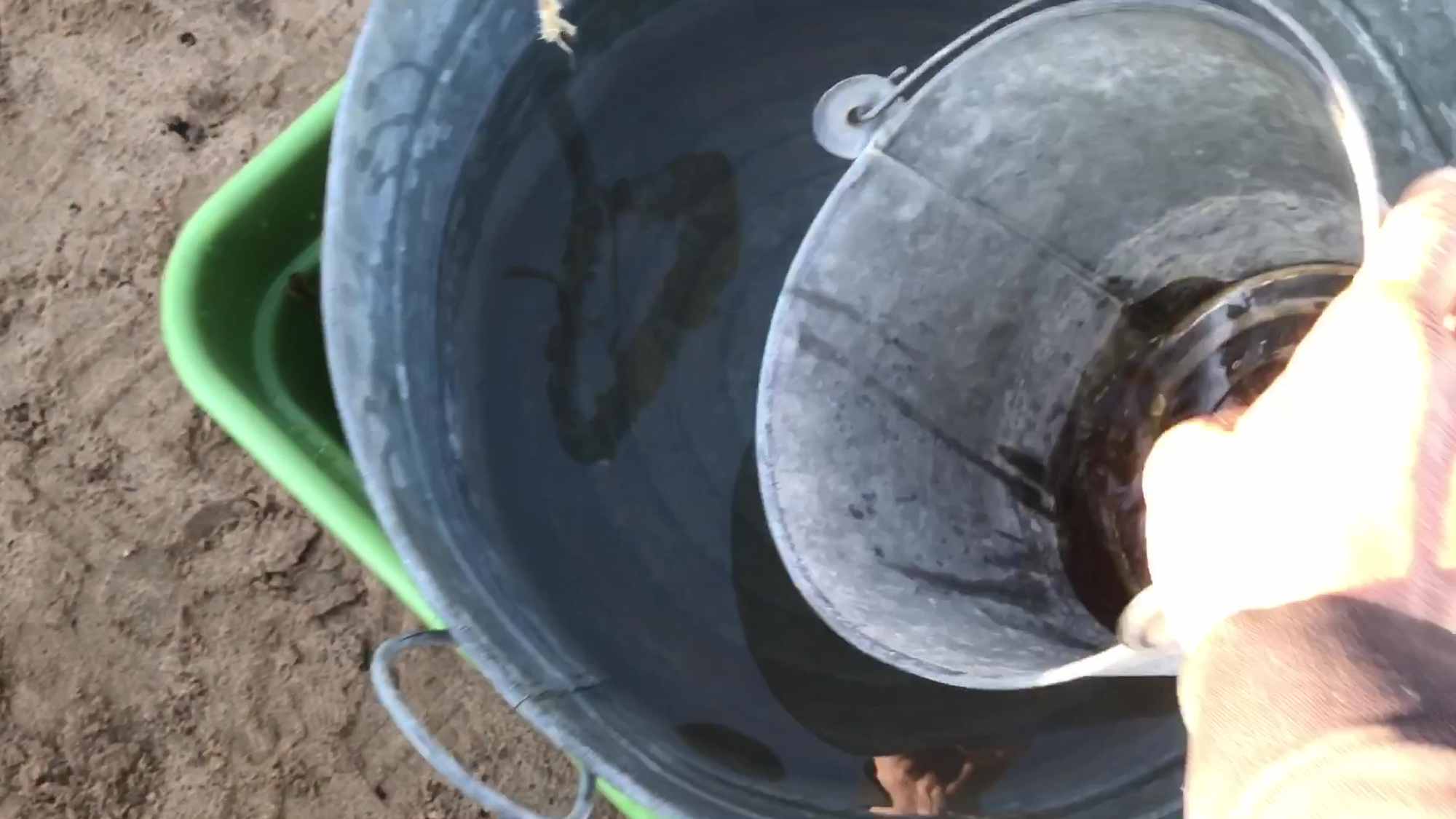
09 Using Galvanized Pail To Transfer Rain Water To Filter System
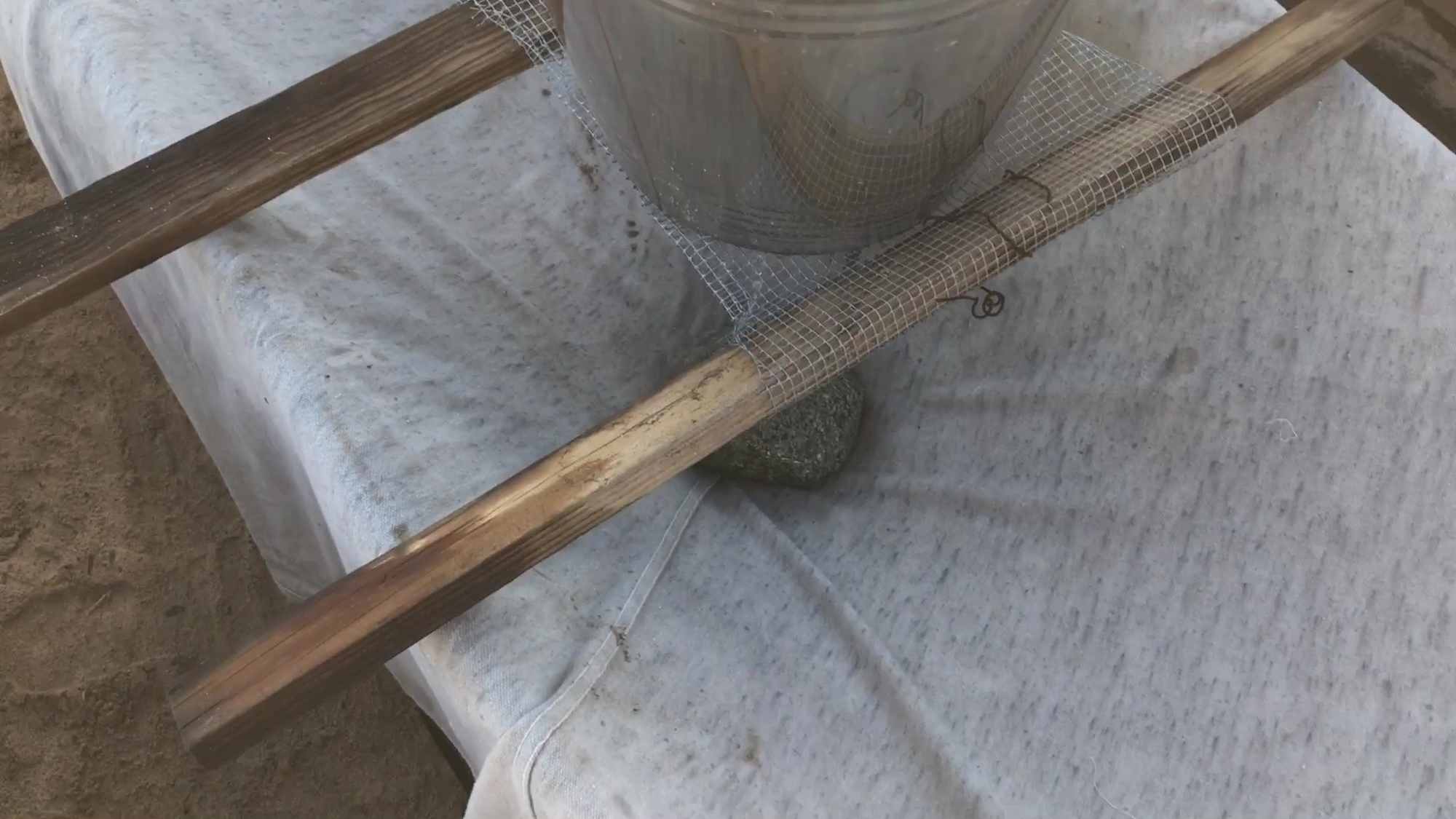
10 Phase One Of Rain Water Catchment Filtration System Using A Screen Mesh Filter On Metal Bucket On To Canvas Covered Stock Tank
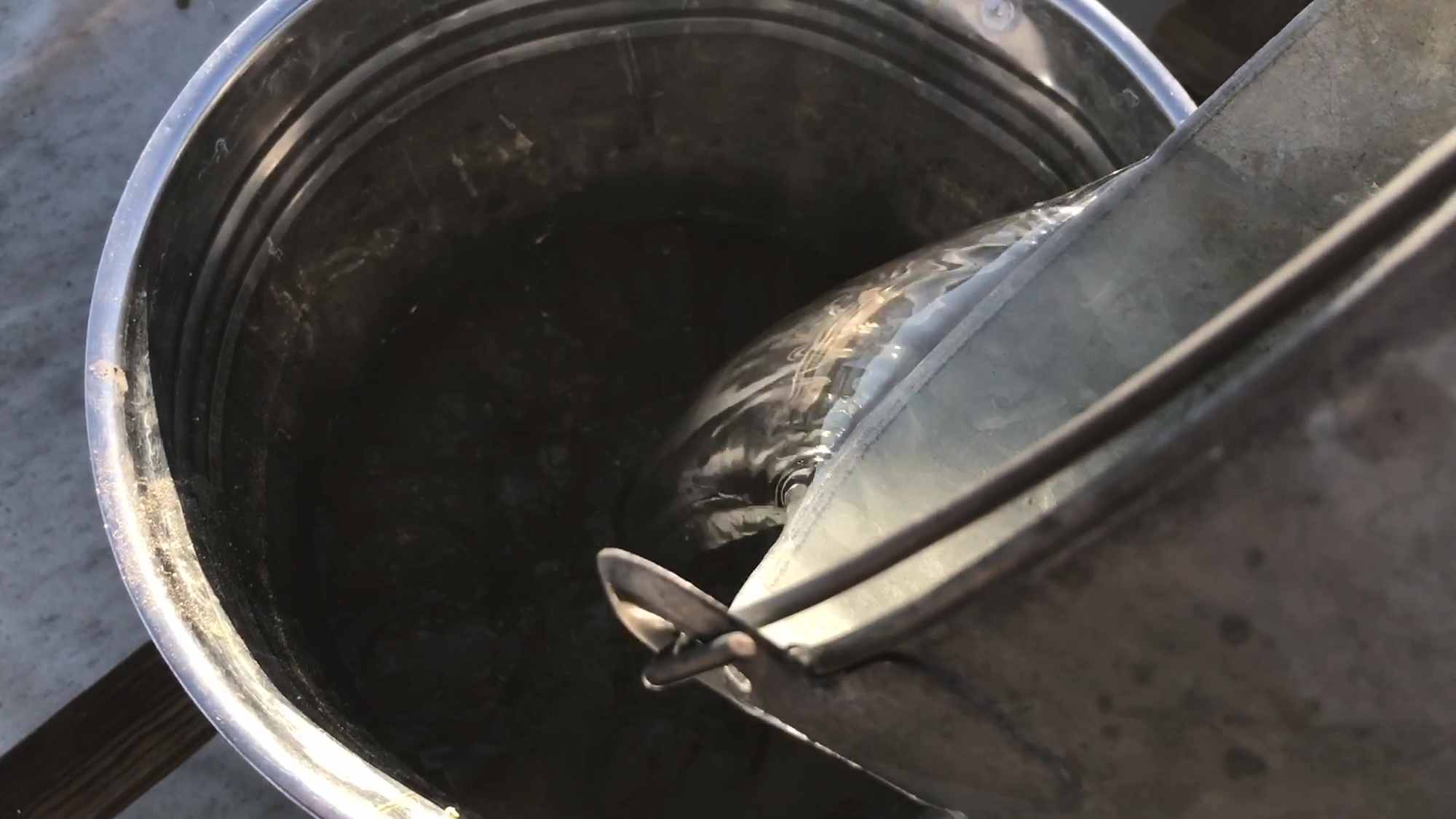
11 Pouring Rain Water Into Filtration Bucket Above Filtration Fabric Into Stock Tank Below
Drill Pump Rain Water Catchment With Pond Pit Drill Tarp Pump And Tubing
After surviving a life threatening injury from harvesting rain water by hand requiring repeated crouching to collect the water, I realized I needed to take the humbling experience, swallow my pride and lean a bit on electrically powered mechanical tools to continue the game of "Flood Sport". I wasn't safe or sustainable to think I could use only my own body strength to collect and transport hundreds of gallons of water in extreme weather conditions. It made sense to go back to the drawing board and re-think my options for mechanical water pumps. My first attempt to use solar power and batteries to run a bilge pump failed as the pump motor died. As was recovering from my injury, I started hunting online for other options, I discovered my savior, the drill pump. I could rely on the motor of a battery powered, rechargable hand drill, that would be cheap and easy to replace if it did fail, but wouldn't be likely to fail. It was less than $20 to get I mid-tier drill pump. You simply attach hoses or tubes to inlet and outlet, and the pumping mechanism has a metal rod that you attach the hand drill to. The hand drill rotates the rod which pumps water from the inlet to through the outlet. I was skeptical at first that a hand drill would have enough power, I doubted that the nominal yields were accurate. But I was surprised to find out how powerful and efficient it was. I was able to move hundreds of gallons of water without exerting myself at all. It seemed like the ultimate solution to the problem that almost killed me in the summer of 2023.
The drill pump, my savior. The only problem was, it drew down the batteries pretty fast. It was understandable that it would. I soon realized that in order to rescue the captured rain water before it evaporated or seeped away, I'd have to buy a lot more batteries and have a lot more solar power to charge and rotate them...To Be Continued